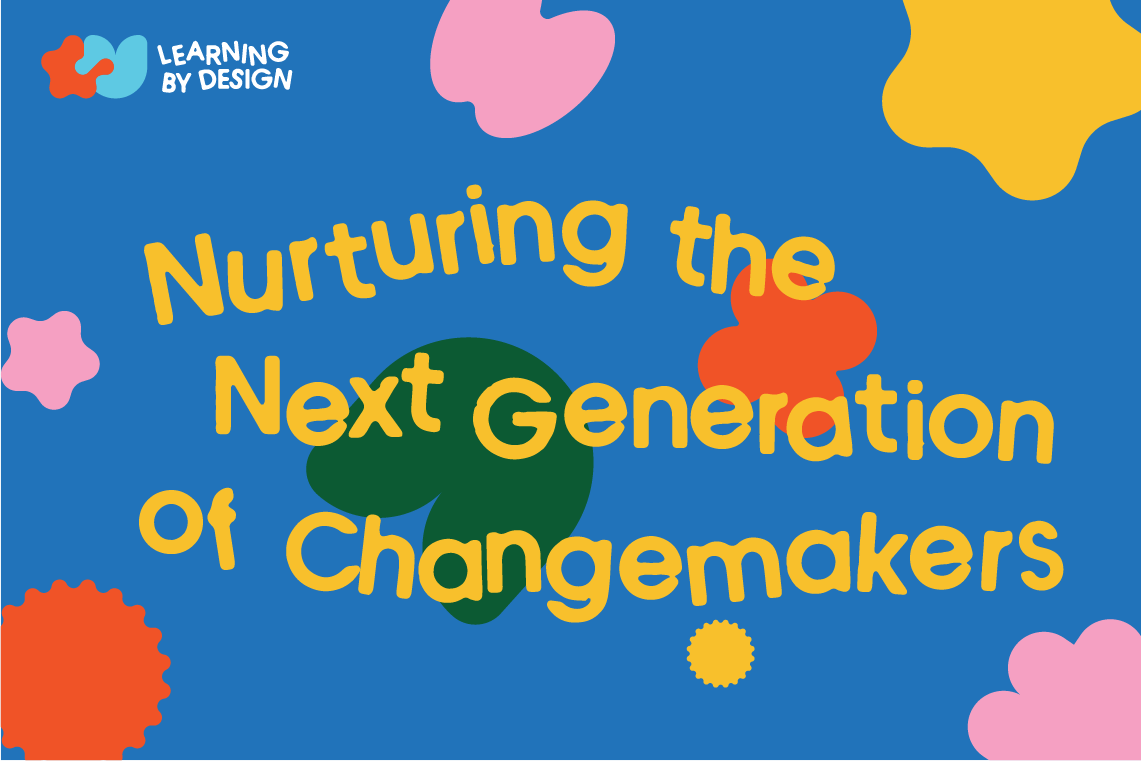Pann Lim Believes Engaging Storytelling Makes Design Relatable
The Co-founder and Creative Director of design and advertising agency Kinetic Singapore believes that creativity, like good storytelling, balances intelligence and emotion – and is key for everyone, regardless of whether or not they are a designer. In recent years, the commercially accomplished designer has been bringing his talent for narrative building and engagement to the challenging realms of sustainability and creative education – and shaking up norms in the process.
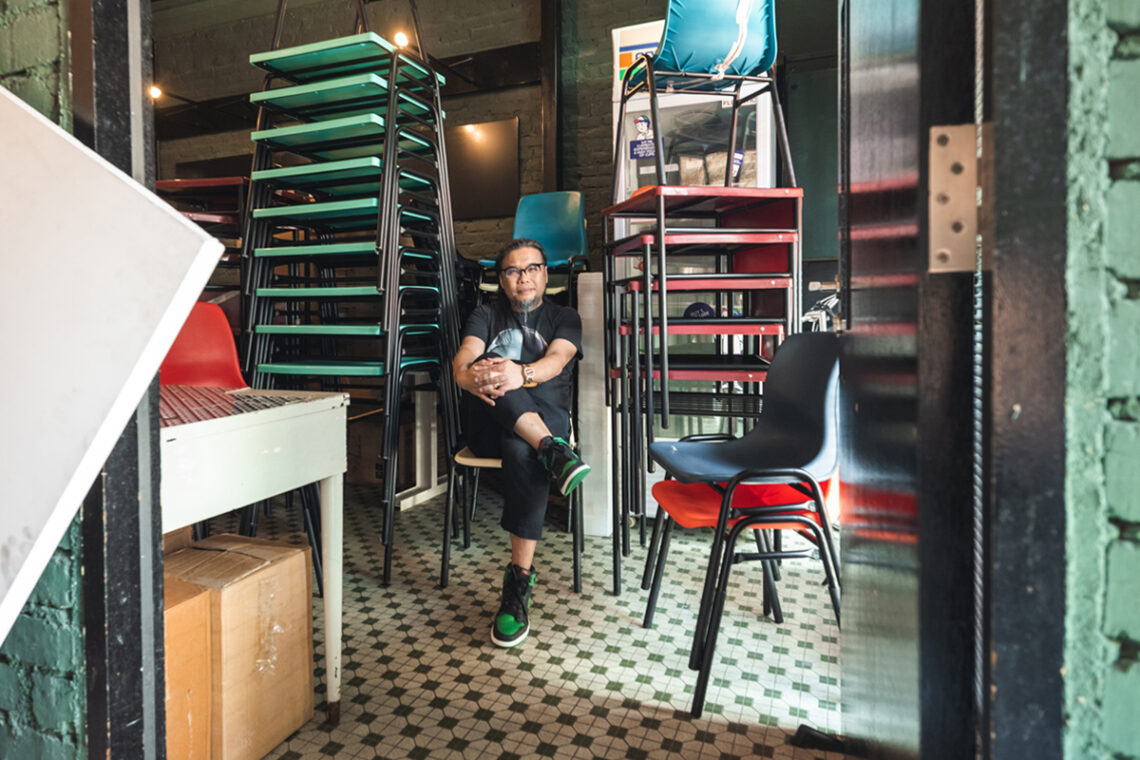
Article by Justin Zhuang.
Looking back on his time as a design and visual communications student in the mid-1990s, Pann Lim recalls frequent visits to his school library and the design bookstore Basheer Graphic Books. Before the widespread adoption of the internet, books and magazines were the primary source of visual research for designers, and whoever found the best sources had the competitive edge.
Today, a plethora of content is available online with the right search terms and just a few clicks. “Now, it’s very democratic. Everyone can see good design in a flash and create similar-looking designs easily,” says Lim. “The challenge for designers is how to cut through the clutter when everybody’s production standards are already high.”
This is why he believes in the critical importance of original concepts and ideas that are relevant to the times. “Conceptual thinking must be even stronger and sharper,” he says, in tandem with deciphering how to present information to people in the most engaging way possible.
This perspective is how Kinetic Singapore has built its reputation as one of the nation’s top creative agencies over the last two decades. It is also how Kinetic is able to continue to engage and fascinate audiences – drawing them close to even the most challenging of topics.
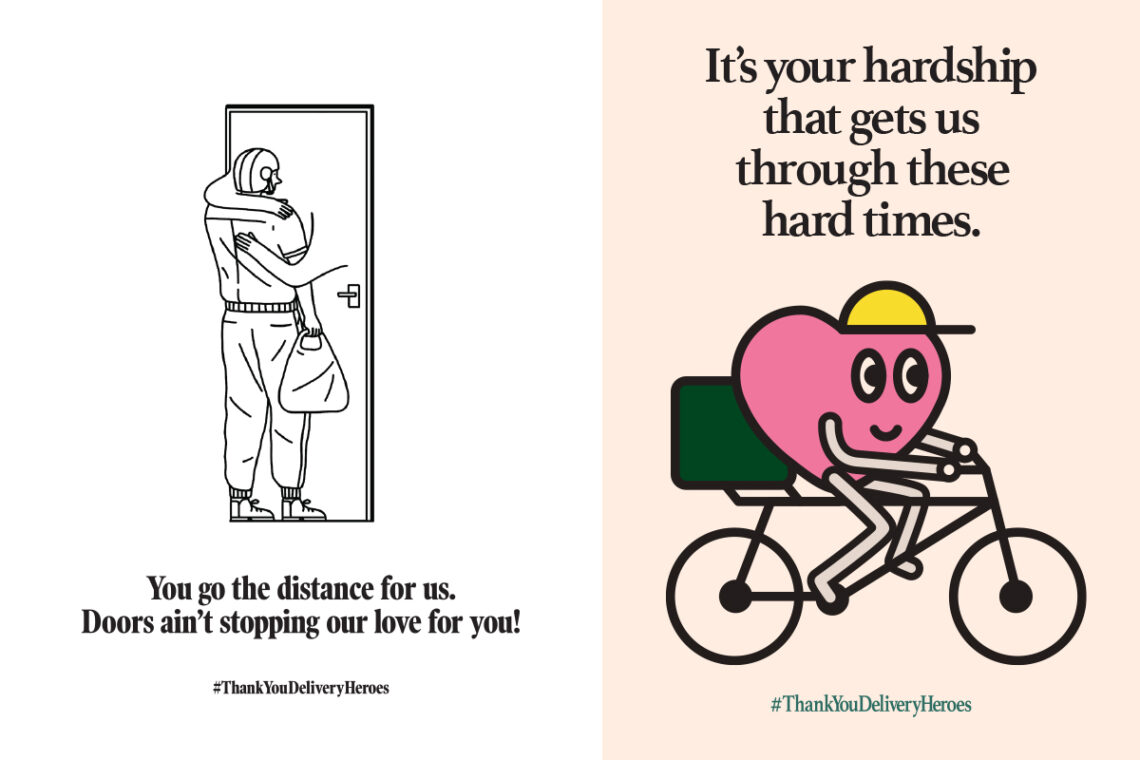
Crafting narratives that engage
Since its establishment in 1999, Kinetic has garnered over 500 industry awards locally and overseas. Singaporeans may remember Kinetic’s campaigns for MINI and Singapore Tourism Board; the agency’s self-initiated #ThankYouDeliveryHeroes activation campaign during the COVID-19 pandemic; or the exhibition A Good Thing, which was showcased in 2018 at Our Tampines Hub for SG Cares. The latter presented everyday objects that told real stories of everyday kindness in Singapore and received 129,000 visitors over ten days – including Prime Minister Lee Hsien Loong.

Lim himself (the agency’s Co-founder and Creative Director) received Singapore’s highest design honour in 2013 when he was conferred the title of President*s Design Award (P*DA) Designer of the Year. “His works are approachable,” said the P*DA jury at the time, adding: “They connect on a human level.”

In 2020, Kinetic received the P*DA ‘Design of the Year’ accolade for its work on a memorable project that made waves with a confronting subject. To help social-impact hub Temasek Shophouse raise awareness of sustainability in conjunction with World Environment Day 2019, Lim and his team were engaged to curate an exhibition on the topic. Rather than prepare a conventional showcase, however, they presented The [Not-So] Convenience Store.
This tongue-in-cheek critique of consumerism invited the public to contemplate sustainable alternatives to everyday products in a witty retail setting. Displayed inside the ‘store’ on shelves, products were presented with two price tags: one showed the Price of Convenience (the price paid by the earth for our wasteful habits) and the other showed the Price of [Not-So] Convenience (the price the visitor pays for taking up the more sustainable alternative). Playful twists abounded, from the cashier dispensing “notes” on how to live more sustainably, to the freezer repurposed as a recycling bin (to “Put a freeze on e-waste”), to the photo wall depicting sustainability champions as “Employees of the Month”.
For exhibition goers, the effect was an inescapable comparison of one’s typical consumption habits with more sustainable options. The project successfully caught the attention of the national media and after its initial run at Temasek Shophouse, it was re-staged in the National Design Centre in 2021.
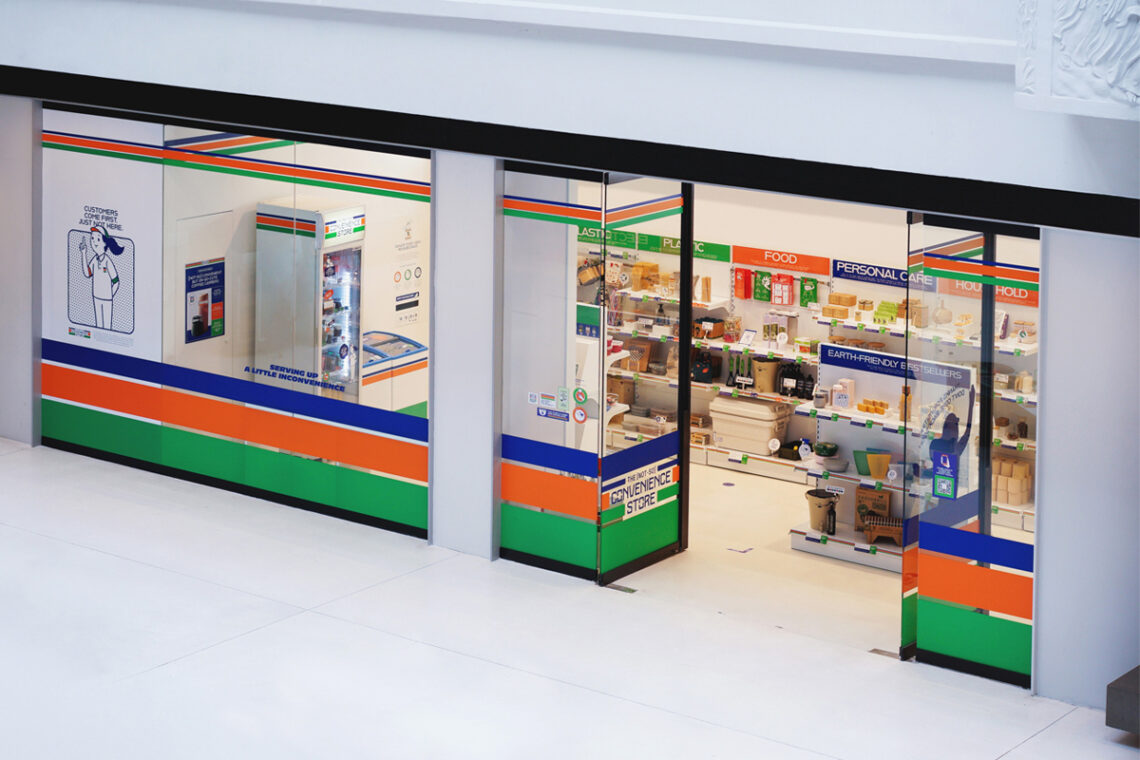
The success of The [Not-So] Convenience Store in striking a chord with the public was despite the fact that no one in the Kinetic team was a sustainability expert. Lim points out they simply found a way of getting through to audiences inundated by the sheer volume of information on a serious subject.
For Kinetic, achieving that kind of engagement means undertaking deep research, putting themselves in the shoes of audiences, and using their own intuition – which all adds up to a mastery of narrative building with a human perspective. “If I look at a design concept and it doesn’t make me feel shiok [chuffed], then something is wrong,” Lim explains. He adds, “The design must be shiok to look at, but the communication and messaging must also have the right ring to it. It’s a combination of everything working together.”

Engagement is the most important thing. I believe what we bring to the table as designers is to present topics that are often quite dry in a more interesting way. All creatives should be good storytellers.
— Pann Lim
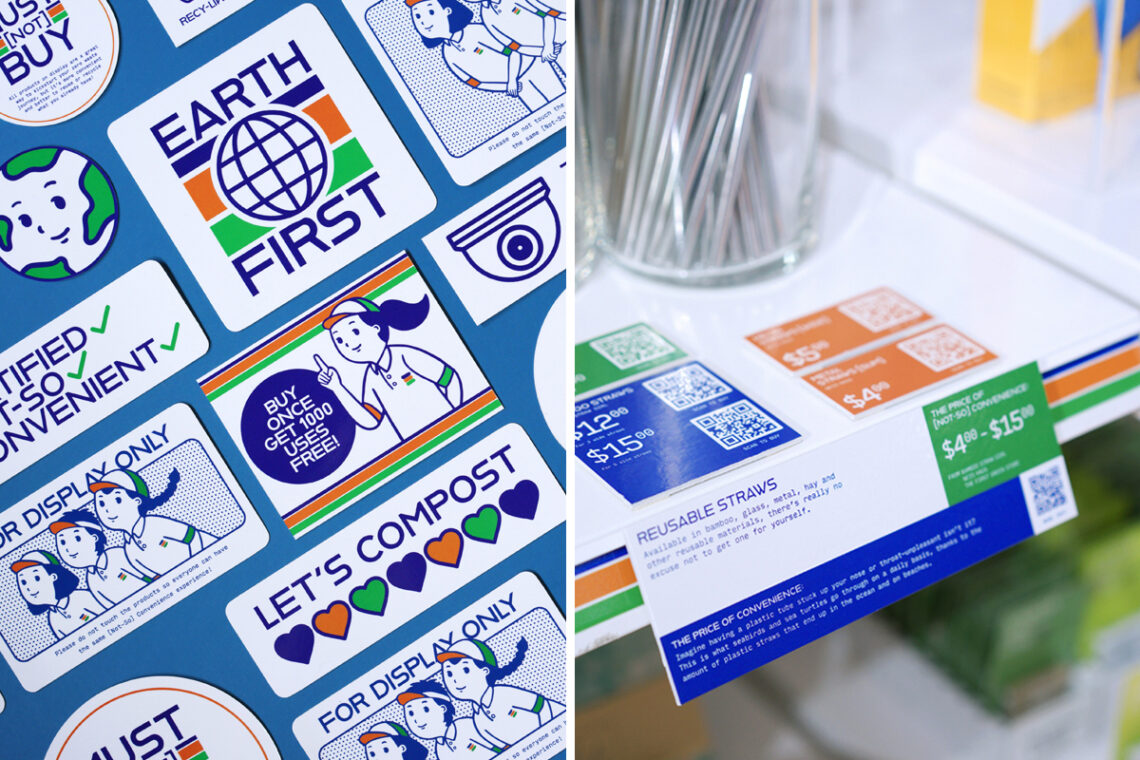
Kinetic has since received other commissions on the topic of sustainability. Following The Waste Refinery exhibition for the DesignSingapore Council (Dsg) at the National Design Centre in 2021–2022, the studio is currently hard at work curating and designing the School of Tomorrow – one of three exhibitions specially commissioned by Dsg in the Bras Basah.Bugis district for Singapore Design Week 2023.

Visitors to the September exhibition at the Selegie Arts Centre can expect classes with a sustainability twist. This includes a mathematics lesson on calculating one’s carbon footprint, a biology class exploring how microplastics impact the body, and a chemistry lab with a periodic table that has been redesigned to include new biomaterials.
The reframing of familiar school contexts to communicate the new lessons of a changing world in an engaging way is a fitting example of Lim’s drive to stay relevant. “The way we communicate sustainability today must be very sensitive and nuanced,” he says. The School of Tomorrow invites learning about sustainability-related issues in a surprising way – embedding visitors in an experience that also includes a canteen serving sustainably produced foods and an art class that uses locally produced natural pigments.

Imparting creativity to all
Such a creative outlook is important not only for designers, suggests Lim, who has long regarded creativity as a way of life. “To solve problems, you need to be intelligent and have emotional sensitivity, otherwise the solution will be top-down or cold,” he says. “If you’re creative, you are able to balance the two. Together, they help create a culture and even a sense of belonging.”
To impart this belief to his two children, Lim and his wife Claire started a family art collective, Holycrap, in 2011. Among their numerous art and design projects is RUBBISH FAMzine – a beautifully crafted magazine series that received the P*DA ‘Design of the Year’ accolade in 2015. Lim clarifies that his goal was never about training his children to be artists or designers. Instead, he was seeking a way for the family to regularly spend time together. Creating ideas and tackling challenges together helped them better understand their love for one another.
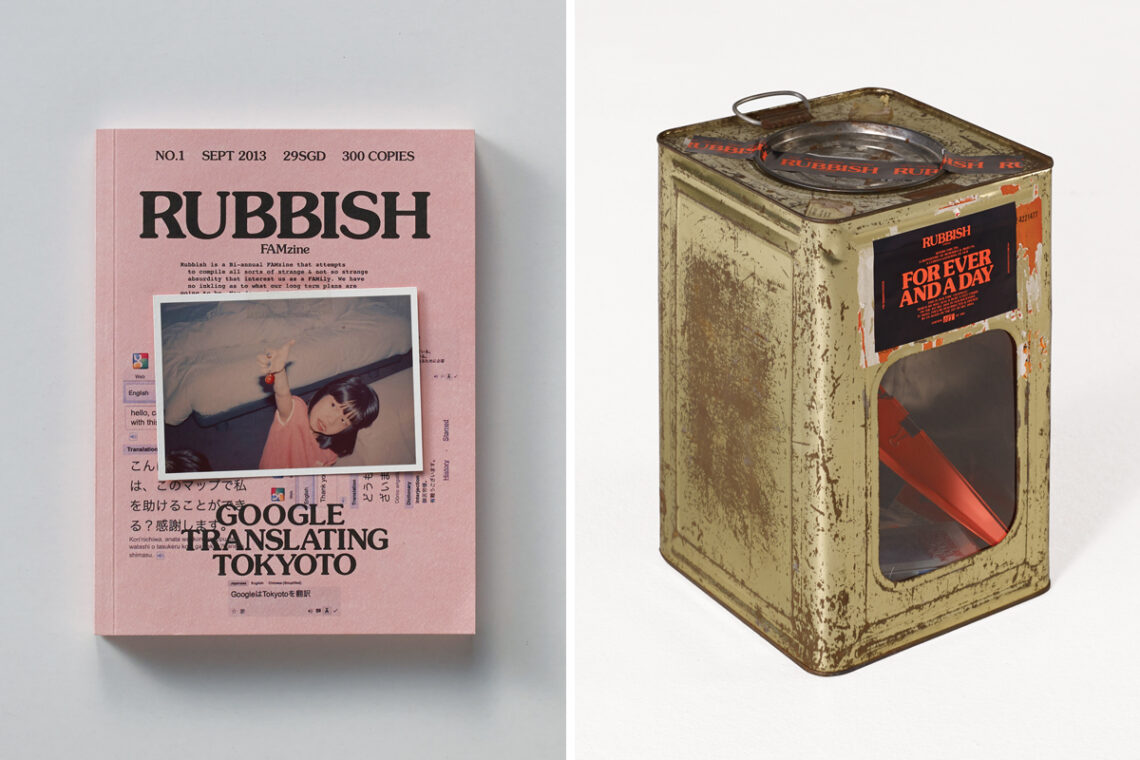
Now that the children have grown up, Lim has begun nurturing creativity in the next generation through Dsg. Since 2020, he has been a member of its Design Education Advisory Committee (DEAC) – the first-ever national platform for design education thought and practice leadership. The committee is prototyping several projects to shape design education in Singapore and embed it into the education system.
One example is the National Design Project where primary, secondary, and junior college students are invited to be mentored by designers while creatively tackling a social challenge. As its chief curator, Lim is heartened by the number of students participating this year – 262 students in 58 teams – with the theme of ‘Designing for Wellness’. He will have the challenging task of curating a selection of the designs to be showcased at Dsg’s Design Education Summit in November.
“The project is for teachers and schools to understand that design can solve problems and we should start introducing creative thinking from a young age,” explains Lim. He adds that the team decided early on that they will not award “winners” in the traditional sense of ranking. Instead, they will look out for good ideas or the effort put in by the teams. This will hopefully encourage the students to experiment and even embrace failure as part of their process.

As creatives, we all know that we will fail so that our next project can get better. If we don’t learn to fail, we will only create people who cannot accept failure and I don’t think that is part of the creative process.
— Pann Lim
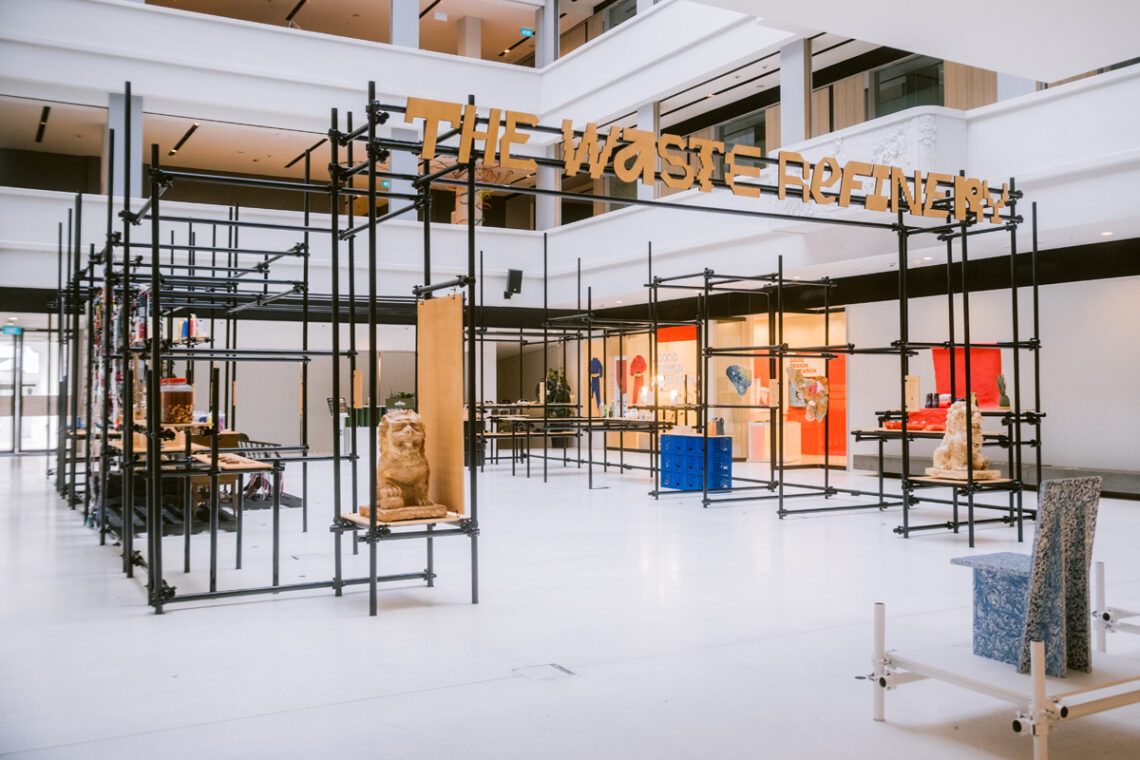
Nurturing a better life by design
After more than two decades of practice, Lim is able to look upon Singapore’s design scene with the contextualising perspective of how things have developed to date. He believes that efforts such as the National Design Project and the Design Education Summit, alongside other Dsg initiatives such as the Dsg Scholarship, Singapore Design Week, the P*DA, and Good Design Research (a grant initiative for which Lim sits on the Evaluation Panel) are key to ensuring Singapore progresses as a city of design. “I hope our designs in public areas continue to become better,” he says. “It’s related to what the DEAC is trying to do by encouraging a whole generation to appreciate design,” he adds.
Designers in Singapore must also continue to stay relevant to the changing needs of the market and society, he suggests. “These days, as with all things in the world, there are a lot of issues tagged onto design. Sustainability is a big issue now, for example. People change, generations change, and they will perceive design very differently,” he says.

But one thing that has remained for the industry veteran is his love for design. Be it the evolution of the mobile phone, a cafe interior, or even the hole drilled into a hawker centre table for hooking one’s umbrella – everything is designed and can be appreciated, he suggests. “All these simple implementations improve our day-to-day activities, and if you ask me, life definitely gets better by design.”

When I wake up in the mornings, I always feel like I’m the luckiest person alive. There is no other job in the world where everywhere you look, you can see aspects of what you can work on.
— Pann Lim
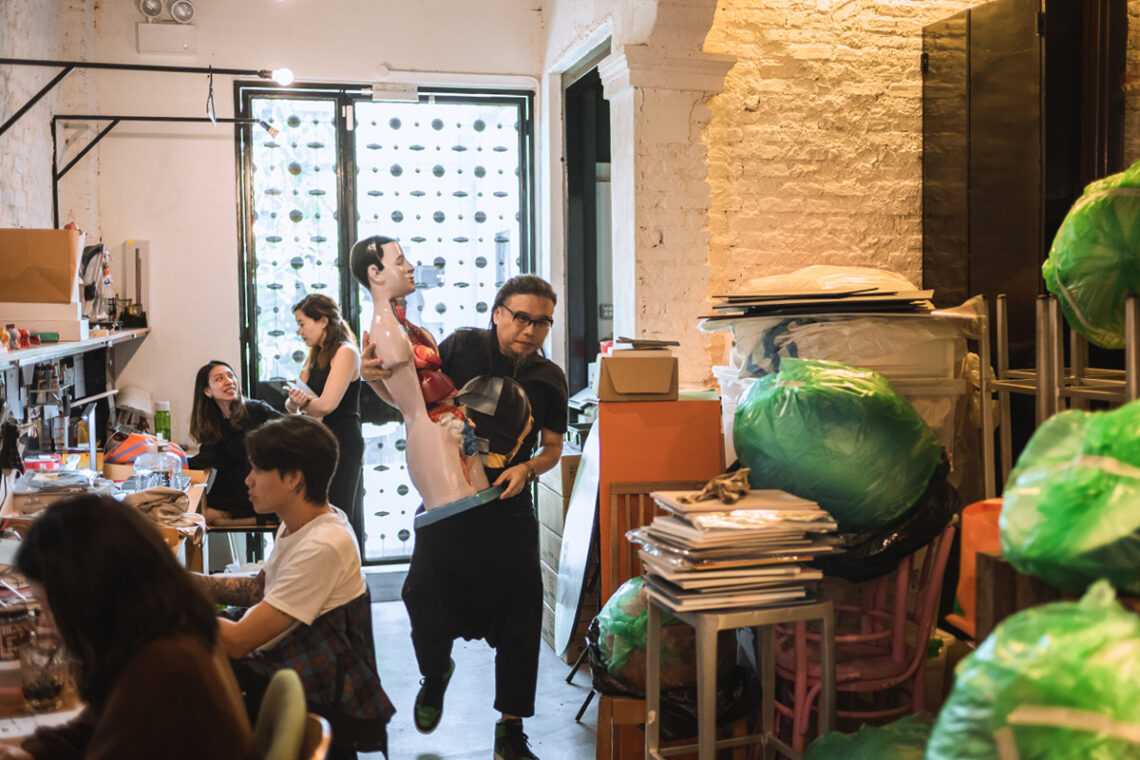
Read our unfolding series of stories on creative discovery and making life in Singapore ‘Better by Design’.



